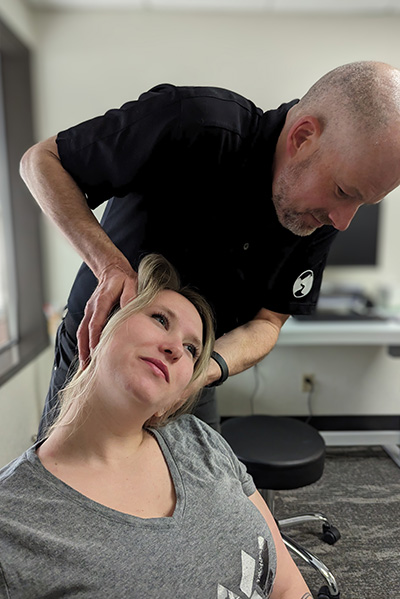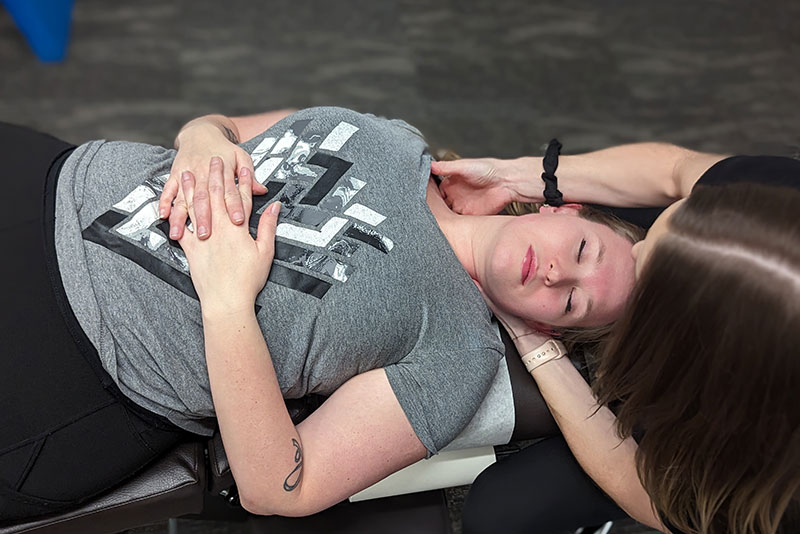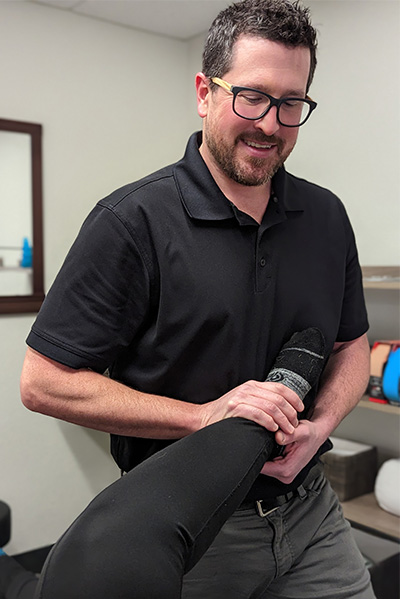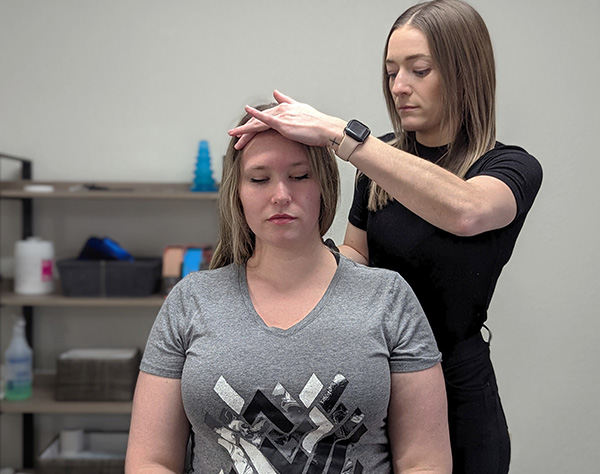New Patient Information & Chiropractic Services



At Whitefish Chiropractic Center, we have three convenient locations to serve you in Columbia Falls, Kalispell, and Whitefish.
We provide a functional approach to chiropractic care, where patients receive an exam to determine the cause of their symptoms and an individualized plan to meet your goals.
Our mission is to get you out of pain and restore function so you can feel better and perform better. We will also provide you with the tools you need for wellness and prevention
Common conditions treated at Whitefish Chiropractic include:
- Chronic and acute neck pain
- Chronic and acute low back pain
- Sports injuries
- Disc herniations
- Sciatica
- Headaches
- Tennis elbow
- Rotator cuff injuries
- Chronic shoulder pain
- Knee injuries
- Hip pain
- Sprained ankles
- Plantar fasciitis
- TMJ pain
- Carpal tunnel
- Wellness care

Our core chiropractic services
Chiropractic adjustments and mobilizations
Our most common treatment option which is designed to restore joint mobility and decrease pain. Adjustments and mobilizations are performed by a chiropractor to joints that are restricted due to repetitive stresses, posture, or injury.
Active Release Techniques (ART)
ART is a patented, state-of-the-art movement-based massage technique that treats problems with soft tissues (muscles, tendons, ligaments, fascia, and nerves).
The doctors will use their hands to evaluate the texture, tightness, and movement of various soft tissues, allowing him to identify and correct the specific problem that is affecting each individual. ART is highly regarded in the sports industry and many professional teams utilize this service for their athletes.
Graston Technique/Instrument Assisted Soft Tissue Mobilization (IASTM)
The Graston Technique is a patented form of instrument-assisted soft tissue mobilization that allows clinicians to effectively locate and break down scar tissue, resulting in more efficient movement with less pain.
Functional and Kinetic Treatment with Rehab (FAKTR) is another form of IASTM that utilizes movement and provocation while treatment to help with tendons, muscles, and ligaments that are restricting movement or with pain that is produced with specific movements.
Dry Needling
Dry needling is an effective treatment for many neuro-musculoskeletal conditions associated with myofascial trigger points (tender points within the muscles).
During this procedure, a sterile, very thin, solid filament needle is inserted into the tissue that is associated with your complaint. One or several needles will be used depending on your individual problem, however, there is little to no pain with this procedure.
Also, because of the small size of the needles, there typically is no bleeding or scarring as a result of dry needling. Relief is often noticed with as little as 1 treatment, although multiple treatments are often recommended.
Kinesio Taping
Kinesio Tape is applied over muscles to reduce pain and inflammation, relax overused muscles, and support injured structures.
It is quite different from traditional athletic tape because it is elastic and allows for a full range of motion. It is also very effective in reducing swelling. This can provide support while still allowing movement providing an optimal healing environment for injured soft tissues.
Home care programs
Home care programs are essential to speeding recovery and preventing recurrence. After determining the most effective stretches and exercises for you, we will send you home with a printed out program accompanied by an emailed version and an app that will show videos and let you track your progress.
This program has been very effective in making sure exercises are done correctly and are very clearly illustrated. The doctors will review them with you in the office and progress them as you improve.
MDT
MDT or mechanical diagnosis & therapy is a reliable and highly effective technique for treating back, neck, and extremity pain. Patients dealing with disc injuries, radiating symptoms into the arms or legs, and acute or chronic neck or back pain commonly respond well to treatment and often see improvement within a short period of time.
The majority of spine and extremity pain is mechanical in origin, meaning that the symptoms are the result of abnormal or excessive stress to muscles and joints. The strain on the muscles and joints can be the product of prolonged poor posture, improper lifting mechanics, or repetitive stress injuries from the cumulative effect of repeated motions.
During the mechanical assessment, the patient is repetitively moved in different directions or put in sustained positions, and the responses are monitored, such as changes in pain severity, location, and range of motion. The assessment takes the guesswork out of the equation because if a direction is found that reduces pain and increases range of motion, it is clear that improvement has been made.
Once the direction is established, treatment will consist of in-clinic and at-home exercises geared towards moving the joint in the direction that leads to improvement until the pain is abolished and the full range of motion is restored.
DNS
DNS is a comprehensive system of assessment and treatment of the neuro-musculoskeletal system.
DNS assessment utilizes a series of functional tests used to analyze the quality of movement and stabilization, which assists in finding the key link of dysfunction.
Due to various factors such as trauma, poor posture, and sports injuries, the body develops muscle imbalance and dysfunctional movement patterns. These compensatory changes can lead to excessive stress on the muscles and joints, resulting in pain or dysfunction.
DNS treatment uses specific functional exercises based on developmental kinesiology. The goal of treatment is to improve spinal and extremity stabilization by enhancing muscle synergy, coordination, and timing leading to ideal stability and movement patterns. These changes in muscle activation and joint stabilization result in reduced pain, improved performance, and long-lasting results.
Low-Force/Gentle Chiropractic Care
Gentle Chiropractic Care is a great alternative for patients that don’t prefer manual manipulation, those with arthritis, osteoporosis, and other bone-weakening conditions. It is also helpful for kids who have a hard time laying still.
The activator adjusting instrument is a small hand-held tool that provides a fast, controlled, and specific thrust to the restricted joints that is comfortable for the patient.
Thompson Technique: Thompson technique uses sections of the table, which are designed to drop a short distance during the adjustment, to adjust the patient using less force than a traditional adjustment.
Testimonials
“Dr. Mike is the best!!! His dry needling has relieved me of so much pain and has changed my life for the better!” – Betsy H. // Kalispell, MT
“Dr. Ryan is awesome. He listens to my concerns and does a great job. Helped heal a foot issue I had for about 2.5 years, in a matter of a couple of months.” – Corinne C. // Whitefish, MT
“They got me in FAST and Dr. Sybrant was amazing. He helped relieve the back pain I was experiencing from pregnancy/new mom constant bending and breastfeeding. He showed me stretches I can do at home, also and explained everything very well. Thank you, Mike! I will definitely be returning.” – Megan C. // Kalispell, MT
“Dr. Mike is the best!!! His dry needling has relieved me of so much pain and has changed my life for the better!” – Betsy H. // Kalispell, MT
“Dr. Ryan is awesome. He listens to my concerns and does a great job. Helped heal a foot issue I had for about 2.5 years, in a matter of a couple of months.” – Corinne C. // Whitefish, MT
“They got me in FAST and Dr. Sybrant was amazing. He helped relieve the back pain I was experiencing from pregnancy/new mom constant bending and breastfeeding. He showed me stretches I can do at home, also and explained everything very well. Thank you, Mike! I will definitely be returning.” – Megan C. // Kalispell, MT
Schedule an appointment today
Don’t let pain hold you back. From climbing a mountain to holding your grandkids, we are here to get you back to doing what you love.
Live active. Live healthy.
Schedule an appointment today!
